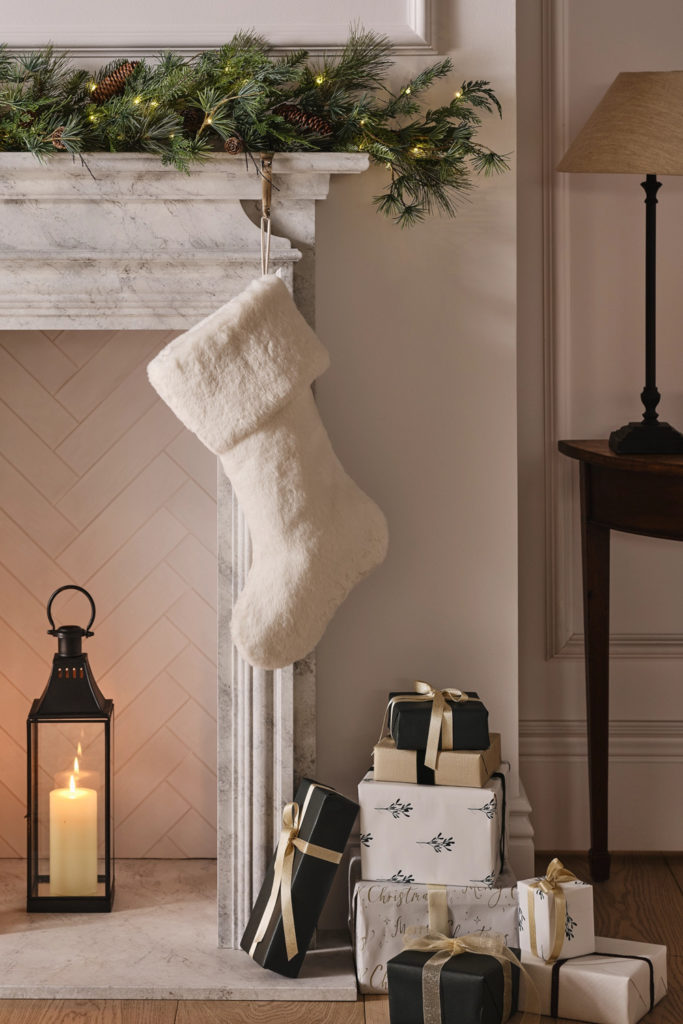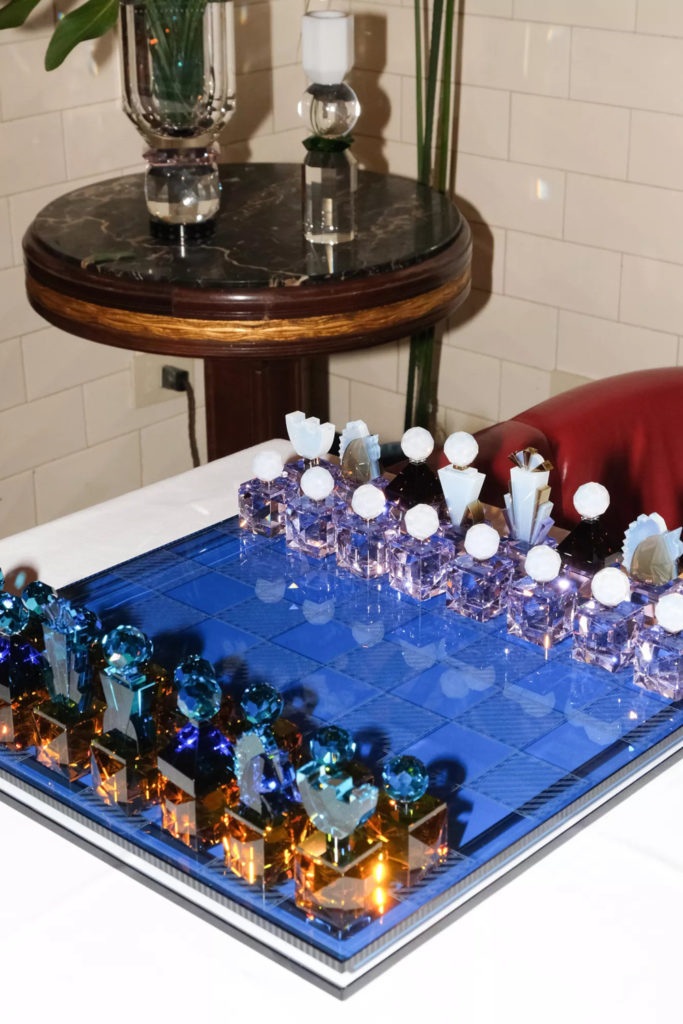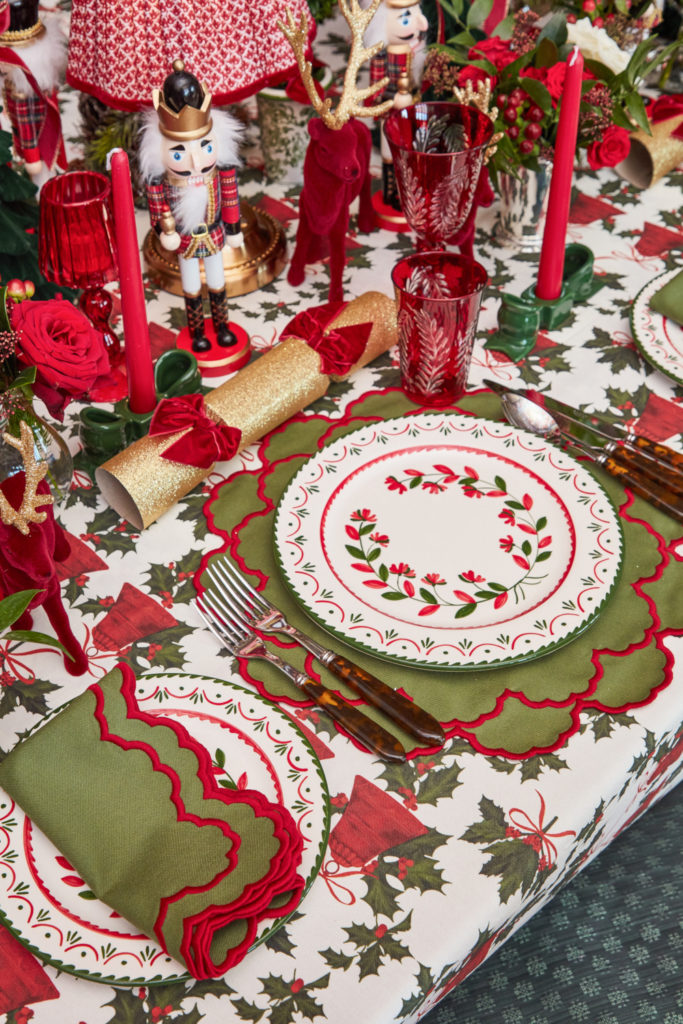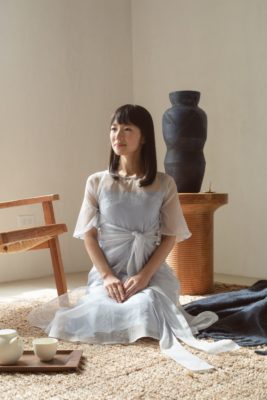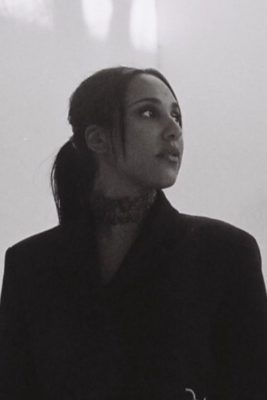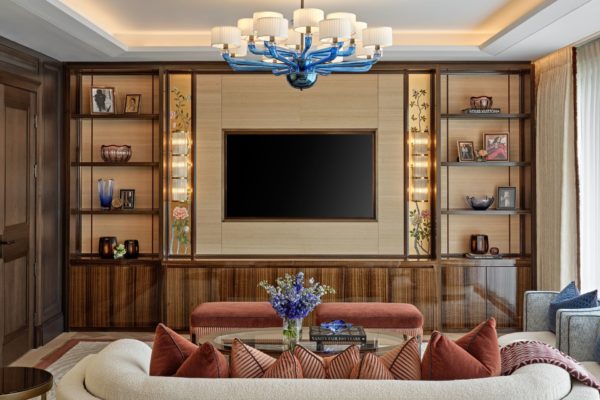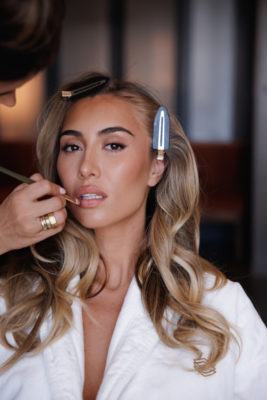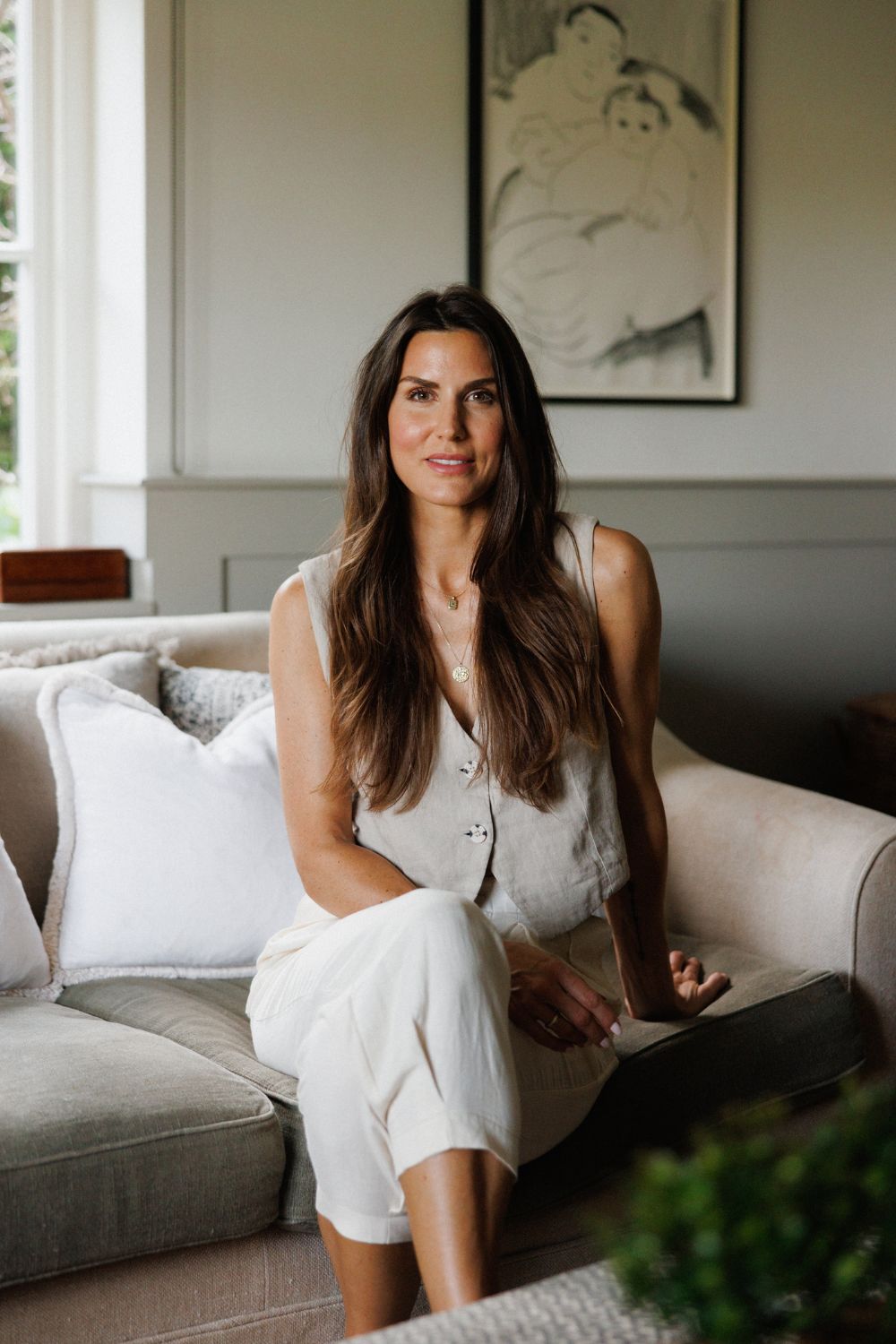
Jojo Barr: Meet The Designer Behind Jamie Laing & Sophie Habboo’s Home
By
2 months ago
Jojo Barr at House Nine Design is one to keep on your radar
The internet has officially fallen head over doorstep in love with Jamie Laing and Sophie Habboo‘s new renovation. A timeless sanctuary, the perfectly Instagrammable home is a masterclass in classic design. But the Made In Chelsea stars turned podcast icons didn’t do it alone. The genius behind their home design? Jojo Barr and her House Nine Design studio. We caught up with the cult-favourite designer to learn all about the project and her design of new London development The Broadley.
Q&A With Jojo Barr
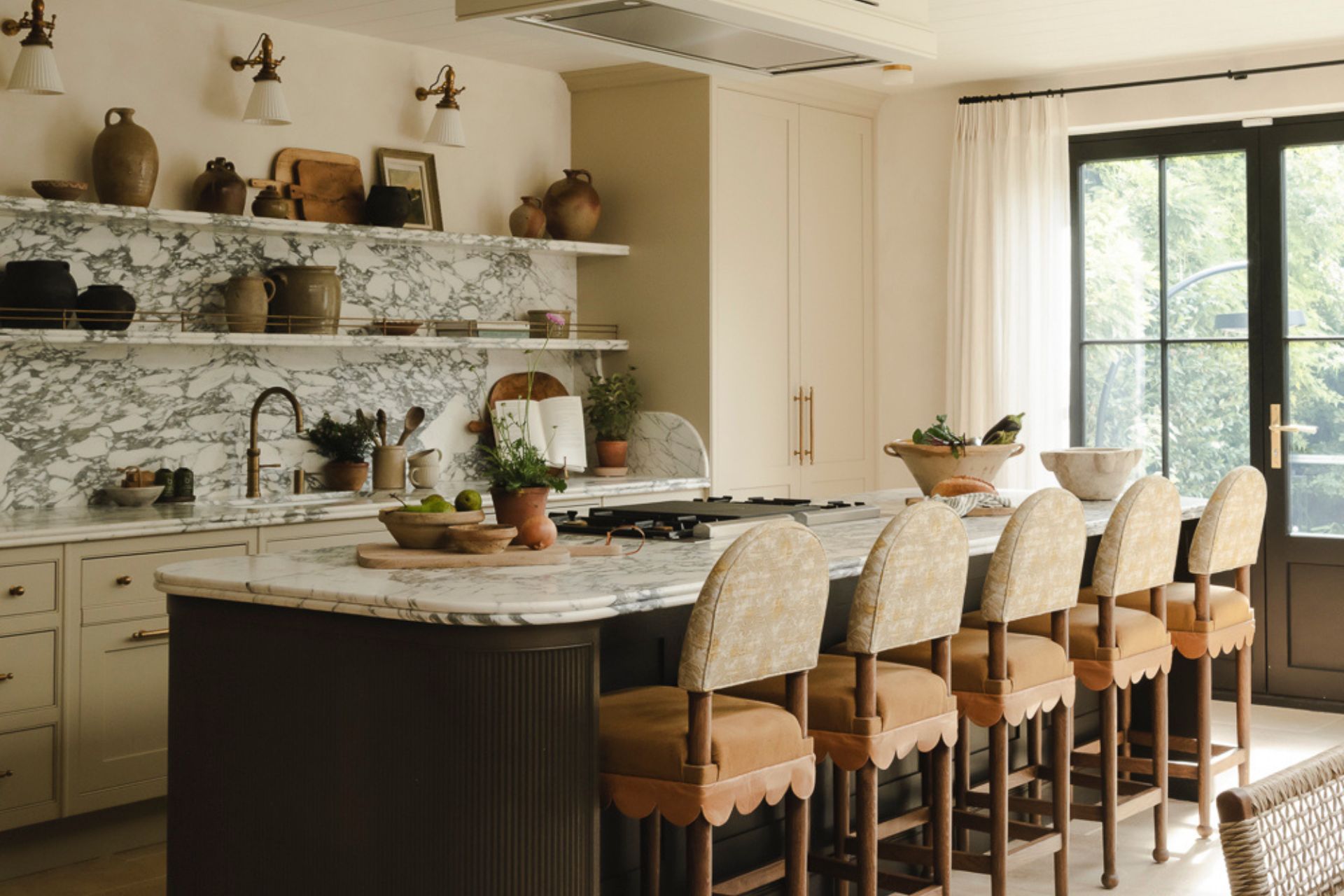
Jamie and Sophie’s home. Photography: Joey Kendal Brown
Hey Jojo – how are you? What have you got going on at the moment?
I’ve got a huge amount going on with current projects, closing up projects, writing a book – which can obviously take a huge amount of time. We are also in the process of filming a fly-on-the-wall documentary about my life as a designer, as well as being a mum juggling two kids. It’s all good stuff.
Your renovation of Jamie Laing and Sophie Habboo’s home has been attracting a lot of attention. How did that opportunity come about?
Out of the blue I got an email from Jamie and Sophie’s PAs saying they would love to meet me to talk about designing their home. They’ve got a lot of friends who follow me on Instagram and I think they pointed Sophie in my direction. And then, that was it. We just immediately got on like a house on fire, and our design very much aligned with their vision. We were just straight in there. It was brilliant.
Were you nervous about or excited by all the attention this brought to your work?
We’ve previously worked with some high profile figures. We don’t tend to get nervous. Yes, they’ve got thousands of followers but they’re just very nice people. I’ve been a designer for nearly 20 years now and I’ve had my own studio for 10. I’m so used to the process of pitching and winning and losing work, that I don’t ever really get that excited or nervous until our foot’s in the door and we’re actually around a table and designing. I think that comes with quite a few years of experience and practice not to get too excited. The excitement comes when the project comes to a close and we’ve got two very happy clients. It’s been a lovely project to work on and it’s lovely that it’s been seen so far and wide.
What made you first fall in love with interior design?
I’ve always been creative since I was a child. Interior design wasn’t an industry that I even really knew about growing up. My mum and my grandmother were always very house proud. And then I got into property and I realised it’s a lovely way to snoop around people’s homes. This opportunity arose because my father and I bought a little flat together and we flipped it. With the money I made from that, I put myself into design school at KCL. It was the first time that I started doing something that I felt truly passionate about. As soon as I finished KCL I went to work for a couple of different designers and worked my way up the ladder. It was totally not my intention to start my own studio, but it was just a natural evolution; when you’re designing for other studios, their style may not be exactly the same as yours.
On Jamie and Sophie’s podcast you joke about how awful many interiors are. What are the most common mistakes?
Gosh that sounds so terribly mean! I’ve got my own podcast called ‘The Ins And Outs’ with landscape designer Pollyanna Wilkinson where we act like agony aunts. And there’s just so many people who don’t get it. But just like how I’m not good with finances, some people just don’t have that creative eye. I think the thing I really notice that people get wrong is colour – that’s a fine art, but there are a lot of basics people can learn. It’s more about flow and balance. A lot of people don’t consider the proportions of things: where you walk into big spaces and it’s got tiny little bits of furniture, or you walk into little spaces where the furniture is too big or the colours are all misplaced, and it’s all clutter.
A lot of people just have too much stuff and it’s not carefully placed. I could go into so many houses where people think ‘this isn’t working’ and you could just take everything out of the room, rejig everything and then place it back in. The placement is everything. People just keep buying and buying and buying, and they’ll follow trends and keep adding without any consideration of getting it right in the first place.
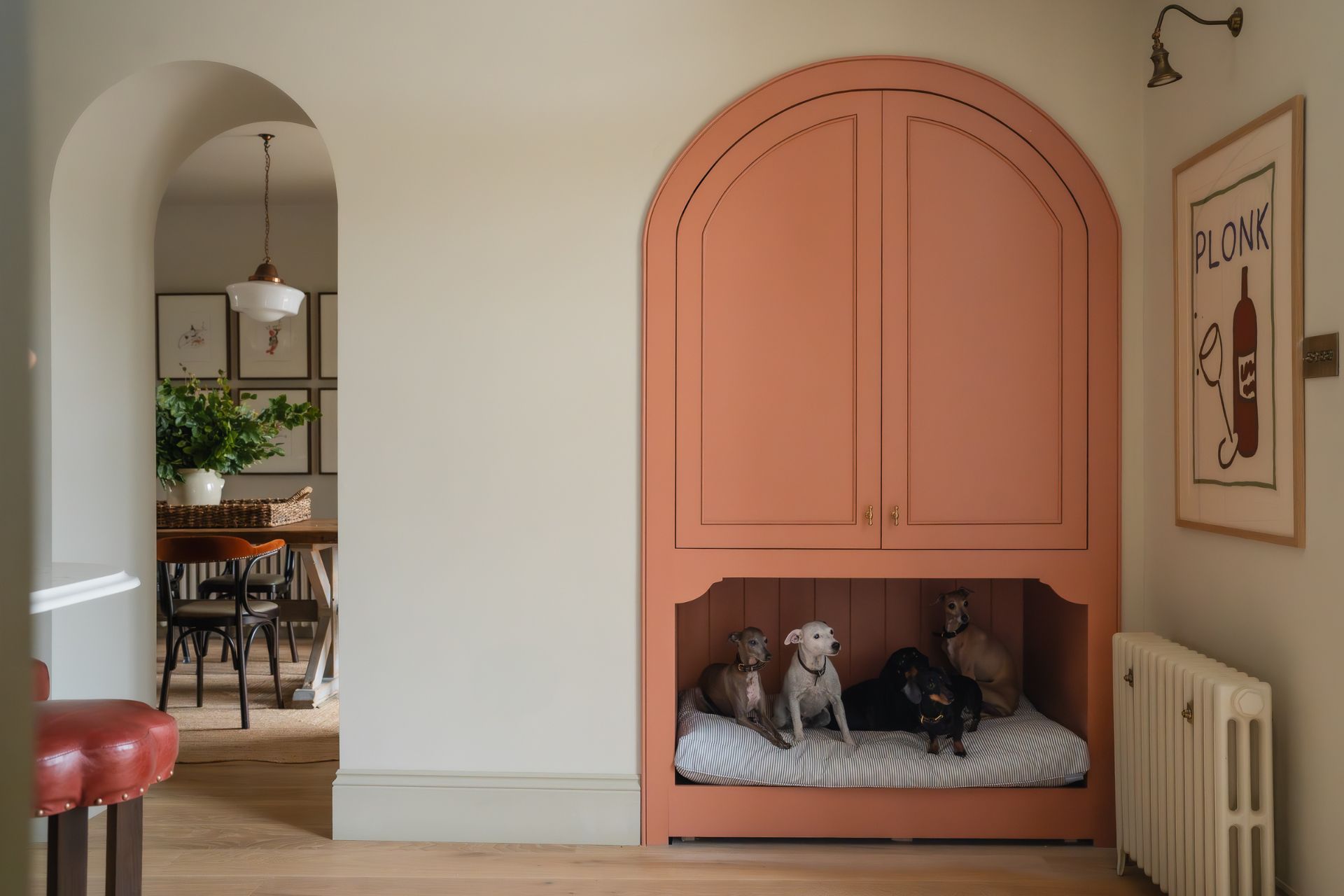
Photography: Joey Kendal Brown
At House Nine you’re all about timeless interiors – what does that mean to you?
People have to be forgiving of themselves if they follow trends. Trends are there to be followed. I think it’s all about sustainability: considering where does that item come from? Don’t just buy the cheapest thing you find because it’s cheap. Is it FSC timber? Does it come from a sustainable source? You’re going to value something more if you know where it’s from and who made it. I always try to get people to head to antique markets and to think about buying secondhand.
When I leave I want people to feel like they can continue to add to a home over time. As people, we are not static and our homes shouldn’t be either. To me, timeless means creating something where the foundations aren’t going to be changed in five, six, seven years’ time. I want it to be around for 20, 30 years’ time, and the items in the home are so lovely and considered that they can be moved and passed down through the generations. If you’re buying something that’s plastic and pink it’s not going to stand the test of time.
Do you ever have to work hard to convince the client that they probably won’t like a Pinterest trend in a few years’ time?
Absolutely. And it’s so funny because usually clients come to us and say ‘I don’t really have any major thoughts about what I like and don’t like’. And then as soon as we start designing, they’re like ‘I don’t think I like that’. And then you can start to draw the real brief. Sometimes people try and be polite at the beginning, but what I love about what I do is that every project is so different and every client is so different. It’s a really collaborative process.
For instance, purple is probably the one colour I find really difficult to use in design. I just don’t like it. But this one client was desperate to use it. So we put it in her downstairs loo, because I say the downstairs loo is the one place that you can have guaranteed fun. We did this dark purple, aubergeine, lacquer pink colour in the downstairs loo and it looked amazing with this beautiful marble sink. I think sometimes a client can push you out of the comfort zone and I love a challenge.
On Jamie’s Instagram he joked about the thousands of arguments spawned by the renovation. How do you balance conflicting visions?
When working with a couple there will always be a public spat, where they get into ‘I don’t like that’, ‘Well I do’ – and everything just comes with a smile. I tend to turn everything into a bit of a joke. You sort of become a little umpire and work it through with them: ‘If we give you that then we can do this in that room.’ It’s never gotten so bad that there’s been any divorces, luckily. So many interior designers I know say we act like marriage counsellors. It definitely comes with its responsibilities.

The Broadley
How much do you draw from the local area in your designs?
Hugely. It’s so important with The Broadley. The original concept for The Broadley was the location; it’s a melting pot of culture. And when you think of a melting pot, you think colour. But of course, there’s a whole spectrum of colour: it’s honing that colour and taking the edge off it, making it really livable. It’s literally a cultural tapestry of the area around it.
Another example, is the Gara Rock Hotel in Devon which we finished eight years ago. The design very much drew on the exterior landscape, which was obviously very rustic, with green hills sitting on the edge of a cliff in Devon looking out at the sea. And there were all these beautiful yellow gauze bushes, and we drew from all of the green and the yellow and the blue from the sea and the stormy grey weather, so that when you’re looking out from the hotel nothing inside jars with this beautiful scenery.
In what other ways to draw inspiration from nature in your design?
I would probably use the word biophilic. I’m hugely inspired by nature and its colours. I grew up in the country and I love long walks in forests and fields. My favourite time of the year is autumn and our house style is very autumn: olive greens and lovely oatmeals, rusty terracottas. It’s proven that these colours are the most comfortable colours to live in. It creates a feeling when you step into a home of comfort and sanctuary. And that’s what we always try to create at House Nine.
How else do you incorporate comfort and practicality into your designs?
I think they’re quite separate – it would be all too easy to say that they’re combined. The most important thing is the architectural flow and functionality. It’s paramount that we get that right first: how people walk through it, where the light switches are going to go, how a doorway might pull you through into another room, where we can fit storage in. The most important thing with good interior design is interior architecture. Then the concept and the colours and the materiality follows.

The Broadley
When you’re working on developments like The Broadley, how do you design a home with universal appeal?
We almost design the concept first and then the branding is delivered on the concept we created. Unlike residential where we’re given much more free reign, at first it’s quite free reign and then we’re pulled back and pulled back and pulled back. There are so many constraints with budget and regulations which can also have a big effect on on what we’re selecting.
What is your favourite feature of The Broadley?
With The Broadley, we used dark timber instead of going for the light oak which so many people do; I wanted to lean into the more classic feel of this development. And then in the workspace we have a pop of terracotta red in these arched little workspaces which is quite playful. A lot of people have questions about whether arches are a fad or a trend but I’ve always used them. It’s a way of pulling your eye through a space, as opposed to it being a very obvious doorway; it just softens the opening, so if you use them right they can be really timeless.
What about in Jamie and Sophie’s house?
Gosh, there’s so many at Sophie and Jamie’s; they really have us free reign. There was a lot of trust, because when it’s a building site there’s obviously not a lot to see. I put some arches in certain places because Sophie was originally drawn to one of our projects that had a lot of arches. I love the rooms that are quite unexpected, so I’d probably say the front room. We really leaned into the moodiness of it because it’s a north-facing. And we just colour-drenched the whole room in Rocky which is one of our paint colours with Coat. It’s a very, very dark, muddy green that is named after my little girl. And then we just bought out these little features that make the room pop. The cinema room is a bit of a wow feature as well because it’s doing something quite unusual. It’s usually the rooms that are so different to what we’ve done before which are our favourite.
What were your key inspirations for their design?
I’d say the true inspiration comes from the people themselves. They are a really fun couple, but they equally love their time together and their privacy. They’re so busy and they’re so wanted by everyone that I wanted to create a home for them that felt like a sanctuary.
Sophie sent some really brilliant Pinterest boards, which were very muted, lots of arches, almost Mykonos inspired. That’s what gave us the foundations of using very soft, romantic colours, so it feels very calming from the minute you walk through the door. She gave us some really good direction; part of the brief was that she just loved marble so we incorporated that throughout. Sophie’s extremely stylish. Jamie will probably hate me for saying that, because he’s like ‘What about me?’ But Sophie’s so beautiful and even the way she carries herself – she’s so elegant – it’s almost like the house suits them. You’ve got pops of fun but the whole thing feels very elegant and very classy.
Find out more about The Broadley at mountanvil.com
Find out more about House Nine at housenine.co.uk

